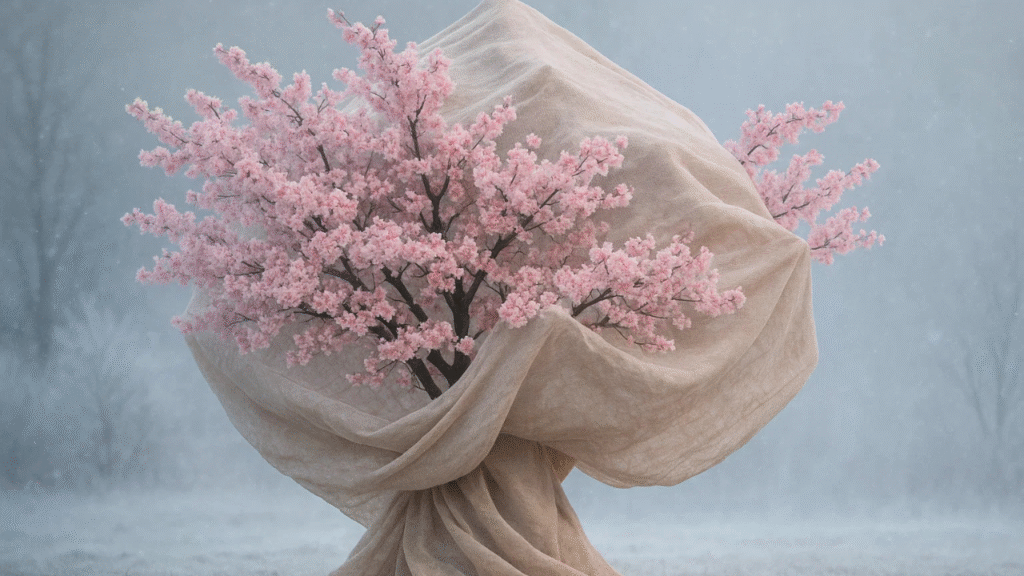
How to Protect Your Cherry Tree from Frost Damage: Essential Tips for Healthy Trees
As a cherry tree owner, there’s nothing quite like watching your tree bloom and produce juicy, sweet fruit. But just one unexpected frost can threaten all that hard work. 🌸❄️ If you’re wondering how to protect your cherry tree from frost damage, you’re not alone. Frost can cause irreversible harm, ruining blossoms, stunting growth, and reducing fruit yields. But don’t worry—by taking a few proactive steps, you can shield your tree from the cold and ensure a healthy, fruitful season. In this guide, we’ll walk you through essential tips to safeguard your cherry tree from frost, keeping it strong and thriving year after year!
Table of Contents
Toggle🌨️🌱 Understanding Frost Damage 🌱🌨️
Frost damage can sneak up on your cherry tree, often occurring when you least expect it. Understanding how frost affects your tree is key to preventing lasting harm.
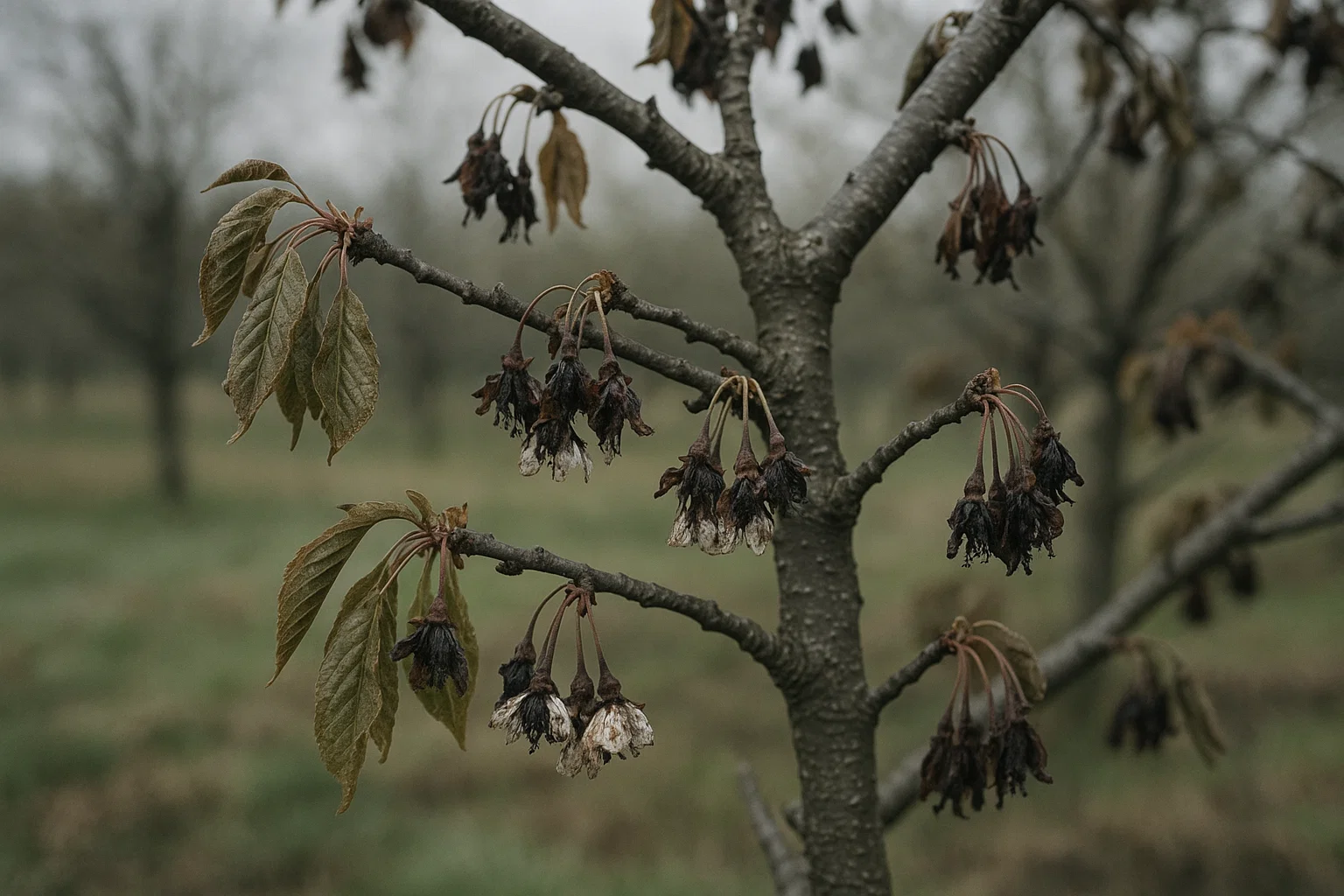
❄️ What is Frost Damage? ❄️
Frost forms when the air temperature drops below freezing, causing the moisture in plant cells to freeze. This ice can damage the tree’s delicate buds, blossoms, and leaves. 🌬️ When the frost thaws, the cells may rupture, leaving the tree vulnerable to disease and poor growth. The worst part? If frost damages the flowers, you may not get any fruit!
🌿 Signs of Frost Damage 🌿
If your cherry tree is affected by frost, look out for these common signs:
- Blackened or shriveled flowers: Frost can kill flowers, leading to no fruit production.
- Damaged buds: Brown or mushy buds that don’t open are a clear sign of frost damage.
- Wilted leaves: Leaves may curl, turn brown, or fall off, especially after a heavy frost. 🌿❄️
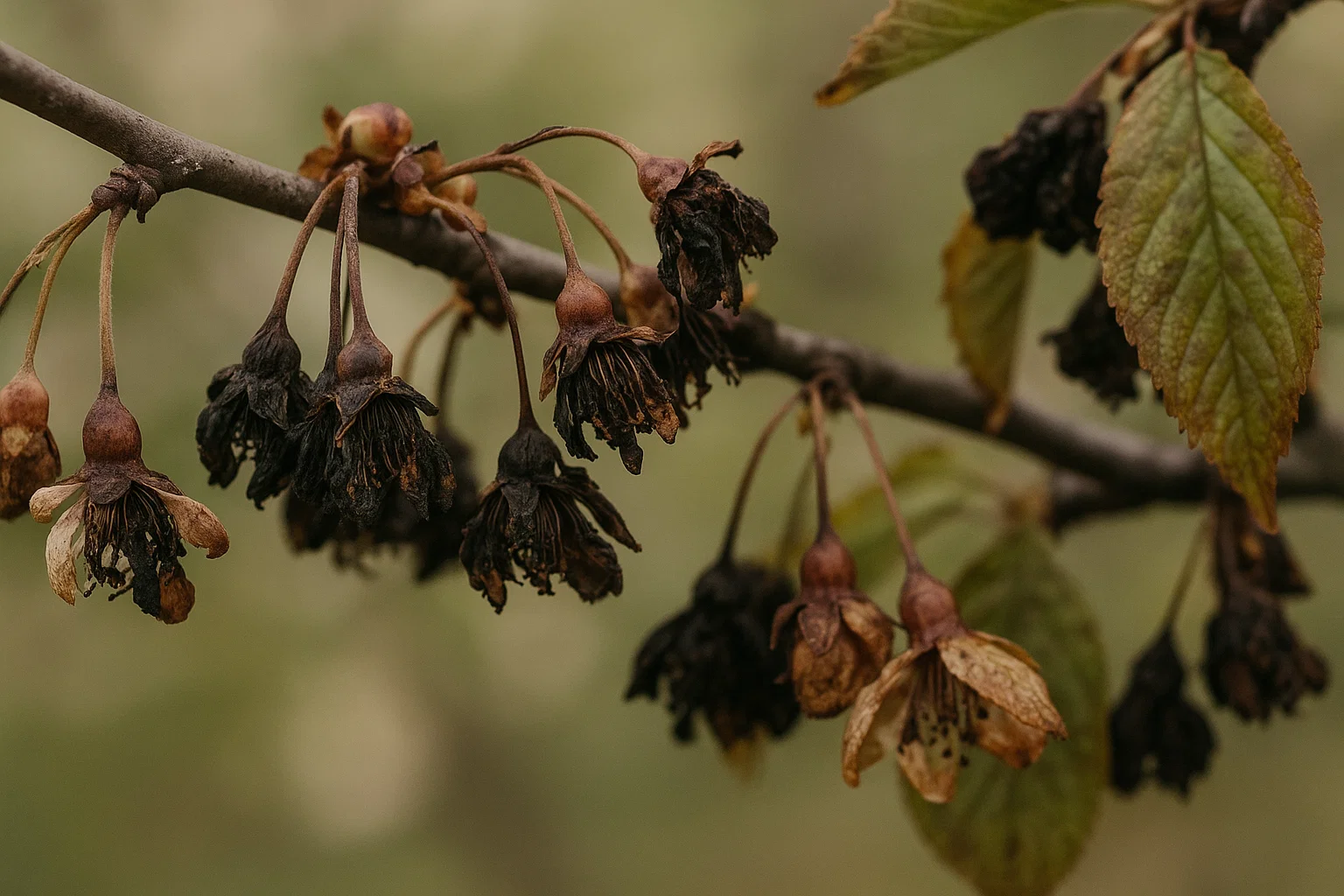
🌸 When Does Frost Damage Occur? 🌸
Cherry trees are most vulnerable to frost in late spring, right around the time they’re blooming. 🌸 A sudden cold snap during this critical period can cause serious damage. Early autumn frosts can also harm the tree, especially when the temperature drops quickly after a warm period.
Knowing when and how frost affects your tree helps you take action before the damage is done. With the right care, you can protect your tree and ensure a fruitful season ahead! 🍒
🌿❄️ Preparing for Frost: Proactive Measures ❄️🌿
Taking proactive steps before the frost hits is the best way to protect your cherry tree and ensure it stays healthy. Here are key actions you can take to prepare:
🌳 Choosing the Right Cherry Tree Variety 🌳
Not all cherry trees are equally resilient to frost. If you’re in an area with late spring frosts, consider planting frost-tolerant varieties like the Montmorency or Bing cherries. These varieties are more likely to withstand colder temperatures and provide a better harvest.
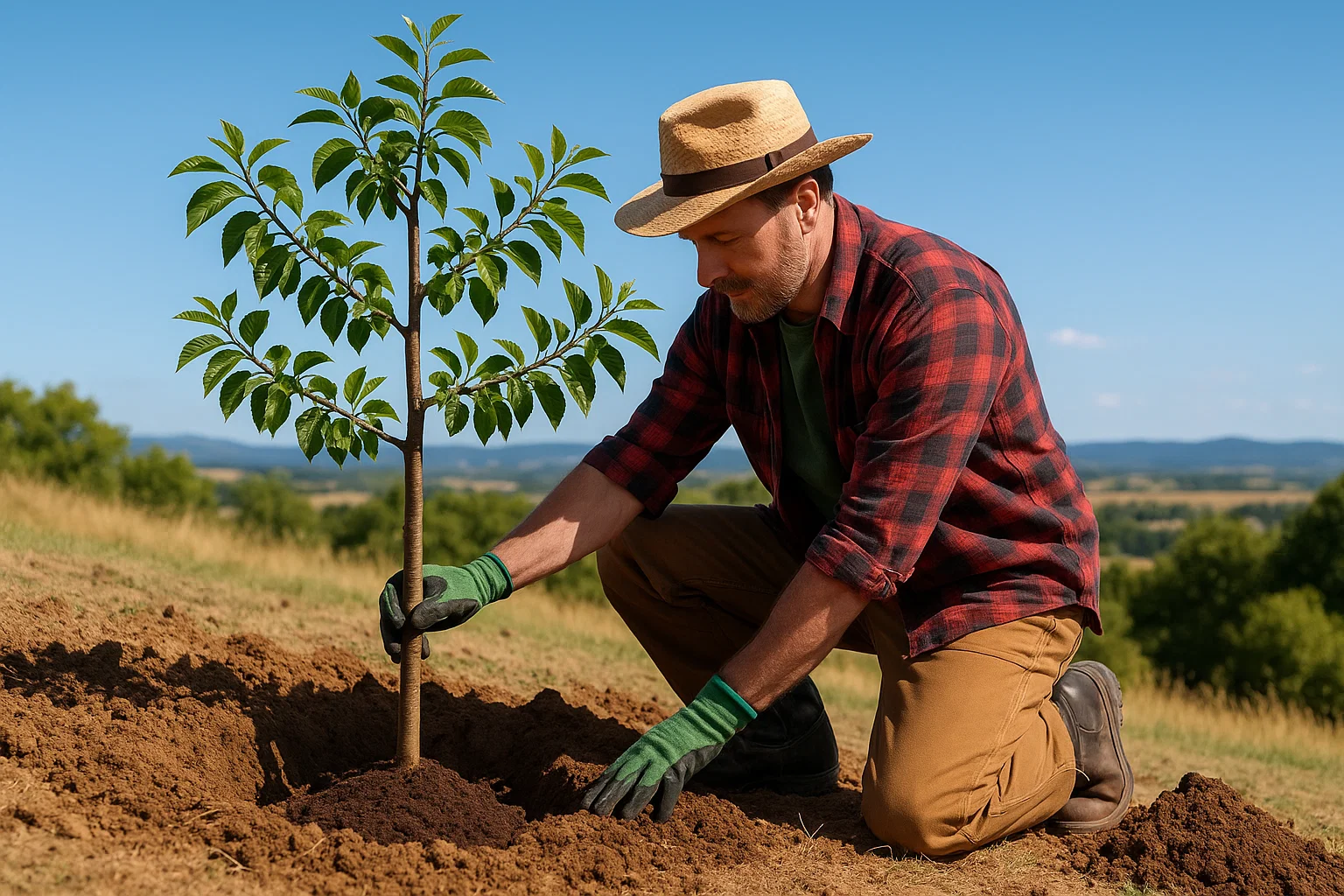
🏡 Proper Site Selection 🏡
Where you plant your cherry tree matters! Trees in low-lying areas or frost pockets are more likely to experience frost damage because cold air settles in these spots. Choose a site that’s slightly elevated and away from areas where cold air can accumulate. A sunny, sheltered spot will also help your tree stay warmer during frosty nights.
🌱 Soil Management 🌱
Healthy, well-draining soil can help protect your cherry tree’s roots from frost. If the soil stays too wet or compacted, it can trap moisture around the roots, which increases the risk of frost damage. Improve your soil by adding organic matter like compost or mulch to boost drainage and ensure your tree’s roots stay warm during chilly nights.
By preparing ahead of time, you’ll reduce the chances of frost damage and give your cherry tree the best start for a healthy growing season! 🌸
🌨️🌿 Frost Protection Methods 🌿🌨️
When a frost warning is in the forecast, it’s time to take action. Here are effective methods you can use to protect your cherry tree from the cold:
🌸 Covering Trees 🌸
One of the simplest and most effective ways to protect your cherry tree is by covering it during a frost. Use frost blankets, burlap, or even old bedsheets to shield your tree from the cold. The cover helps trap heat and protect the blossoms and buds. Be sure to cover the tree in the late afternoon or early evening before temperatures drop. In the morning, remove the covers to avoid overheating once the sun rises.
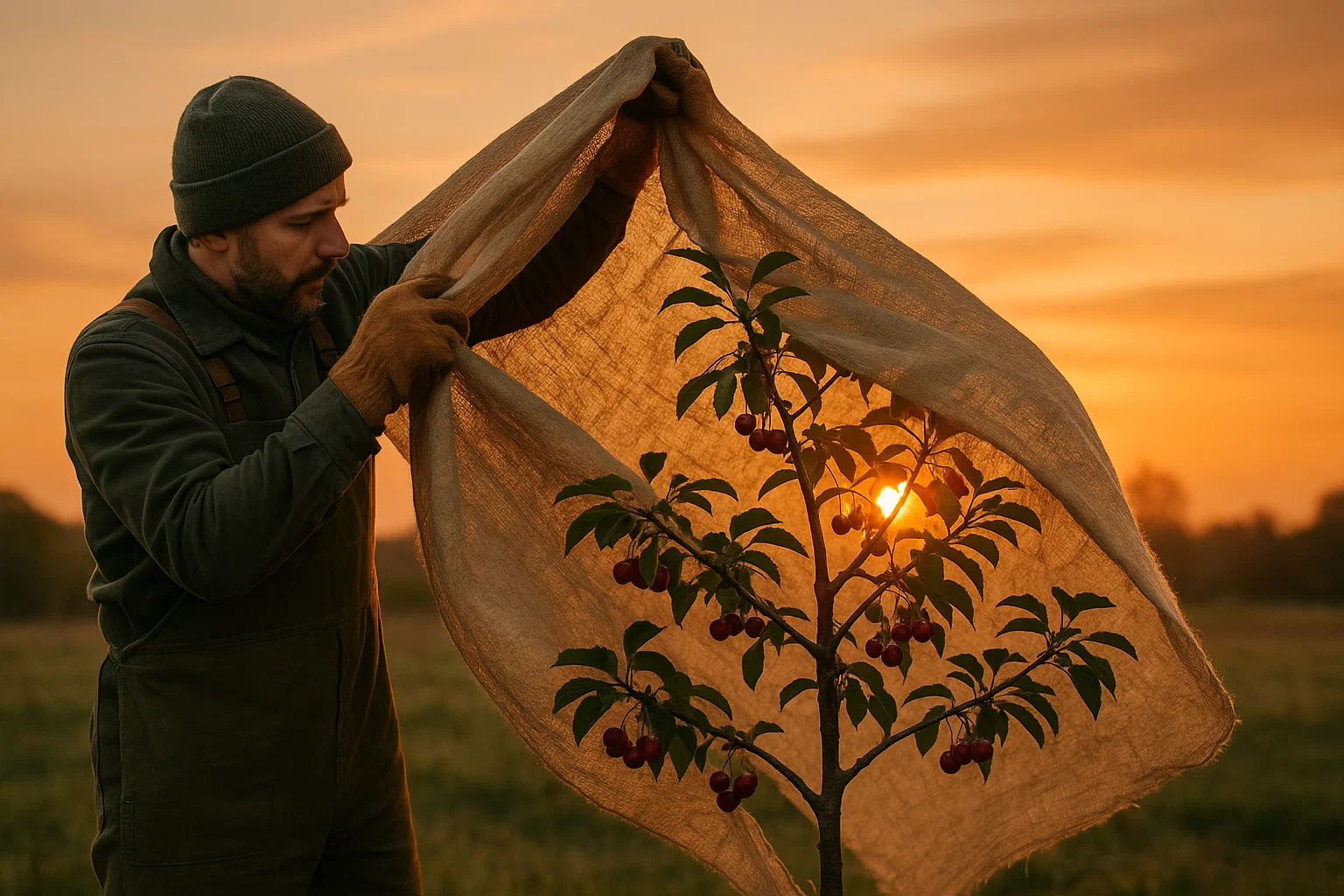
💧 Watering Techniques 💧
Watering your cherry tree before a frost may sound counterintuitive, but it works! Well-watered soil can absorb and hold heat better than dry soil, which helps keep your tree’s roots warmer. 🌡️ Water your tree thoroughly in the late afternoon or evening before the frost hits. Just make sure not to overwater or allow the soil to become soggy.
🌾 Mulching Around the Base 🌾
Mulch isn’t just for keeping weeds away—it also helps insulate the roots of your cherry tree. A layer of mulch around the base keeps the soil warm and prevents sudden temperature changes that could harm the roots. Use straw, wood chips, or leaves to create a thick mulch layer that will provide added protection against frost.
🔥 Using Heaters and Wind Machines 🔥
For serious frost protection, especially in areas with frequent frost threats, you can invest in heaters or wind machines. These devices help raise the temperature around your tree by circulating warm air or using direct heat. While this method is effective, it can be costly and energy-intensive, so it’s usually best for high-value trees or orchards.
By using these frost protection methods, you can greatly reduce the risk of frost damage and give your cherry tree the best chance to thrive, even in chilly conditions! Knowing how to protect your cherry tree from frost damage ensures you’re prepared for sudden temperature drops that could otherwise harm your tree. 🌟
🌿❄️ After Frost Damage: Steps for Recovery ❄️🌿
Even with the best precautions, frost can sometimes still cause damage. If your cherry tree has been affected, don’t worry! Here’s how to help your tree recover and bounce back stronger:
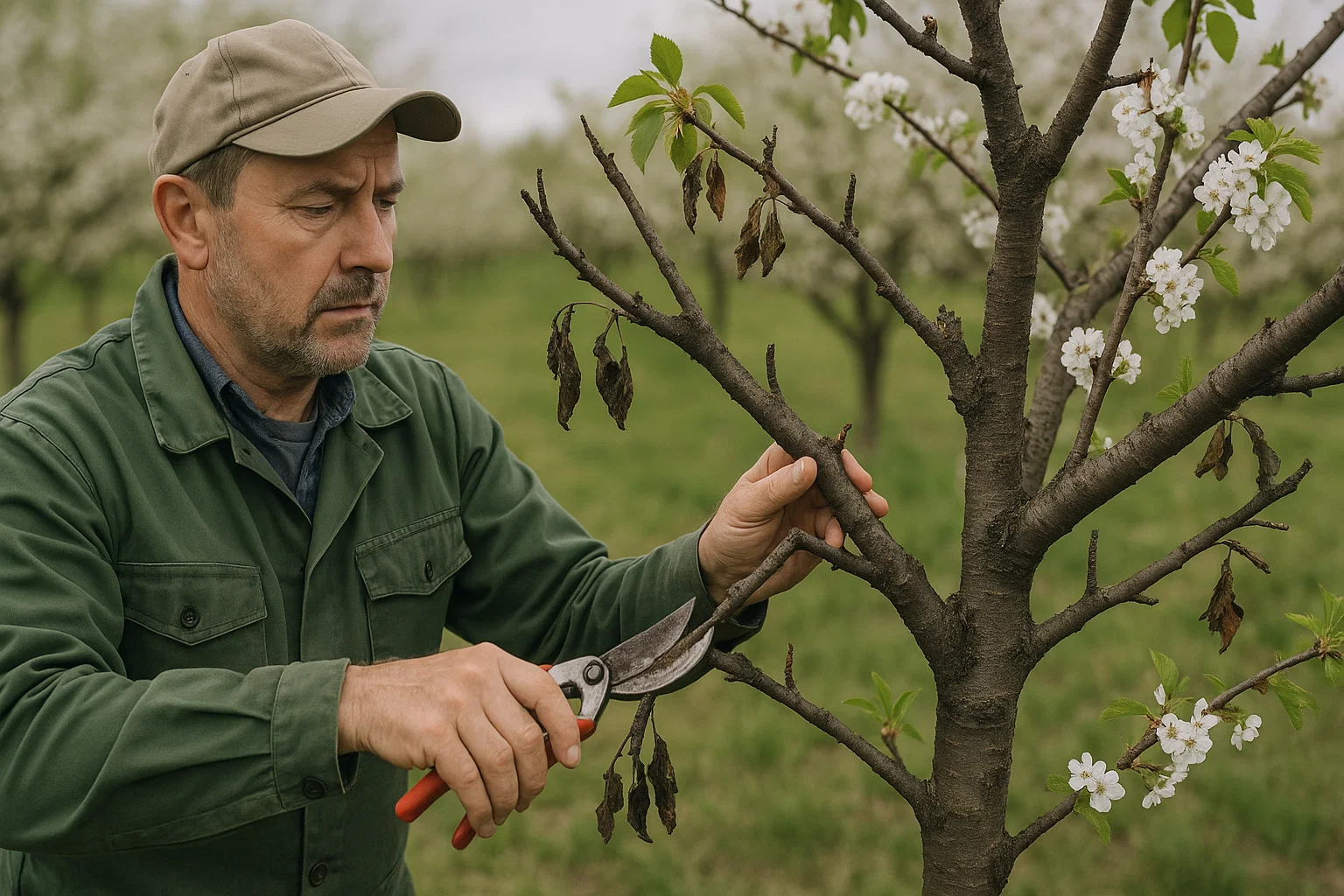
🔍 Assessing the Damage 🔍
The first step is to inspect your tree carefully. Look for blackened or shriveled blossoms, discolored or mushy buds, and wilting leaves. 🌸 These are signs that frost has taken a toll. Check the tree’s bark for any cracks or damage as well. The sooner you catch the damage, the better you can act.
✂️ Pruning and Care ✂️
After frost, it’s important to prune any damaged branches to help the tree recover. Remove dead or severely damaged wood, cutting just above a healthy bud or branch. This allows the tree to redirect its energy into healthy growth. Be careful not to over-prune—only cut what’s necessary.
🌱 Fertilization and Support 🌱
Help your tree recover by feeding it with a balanced fertilizer. 🍃 This will provide the essential nutrients it needs to regrow healthy branches and buds. Be sure to follow the fertilizer instructions carefully to avoid over-fertilizing. Continue regular watering, but don’t let the soil stay soggy, as this can lead to root rot.
🌿 Extra Care for New Growth 🌿
As your tree begins to put out new growth, keep an eye on it to ensure it remains healthy. Consider using a tree guard or temporary protection around new shoots to prevent further frost damage. Regularly check for pests or diseases that may target weakened trees.
With the right care, your cherry tree can recover from frost damage and come back stronger, ensuring a healthy and fruitful future! Understanding how to protect your cherry tree from frost damage is key to preventing setbacks and supporting long-term growth. 🍒
🌳🌞 Long-Term Prevention: Building Resilience 🌞🌳
To ensure your cherry tree remains strong and resilient against future frost threats, it’s essential to focus on long-term care. Here are steps you can take to help your tree withstand cold temperatures year after year:
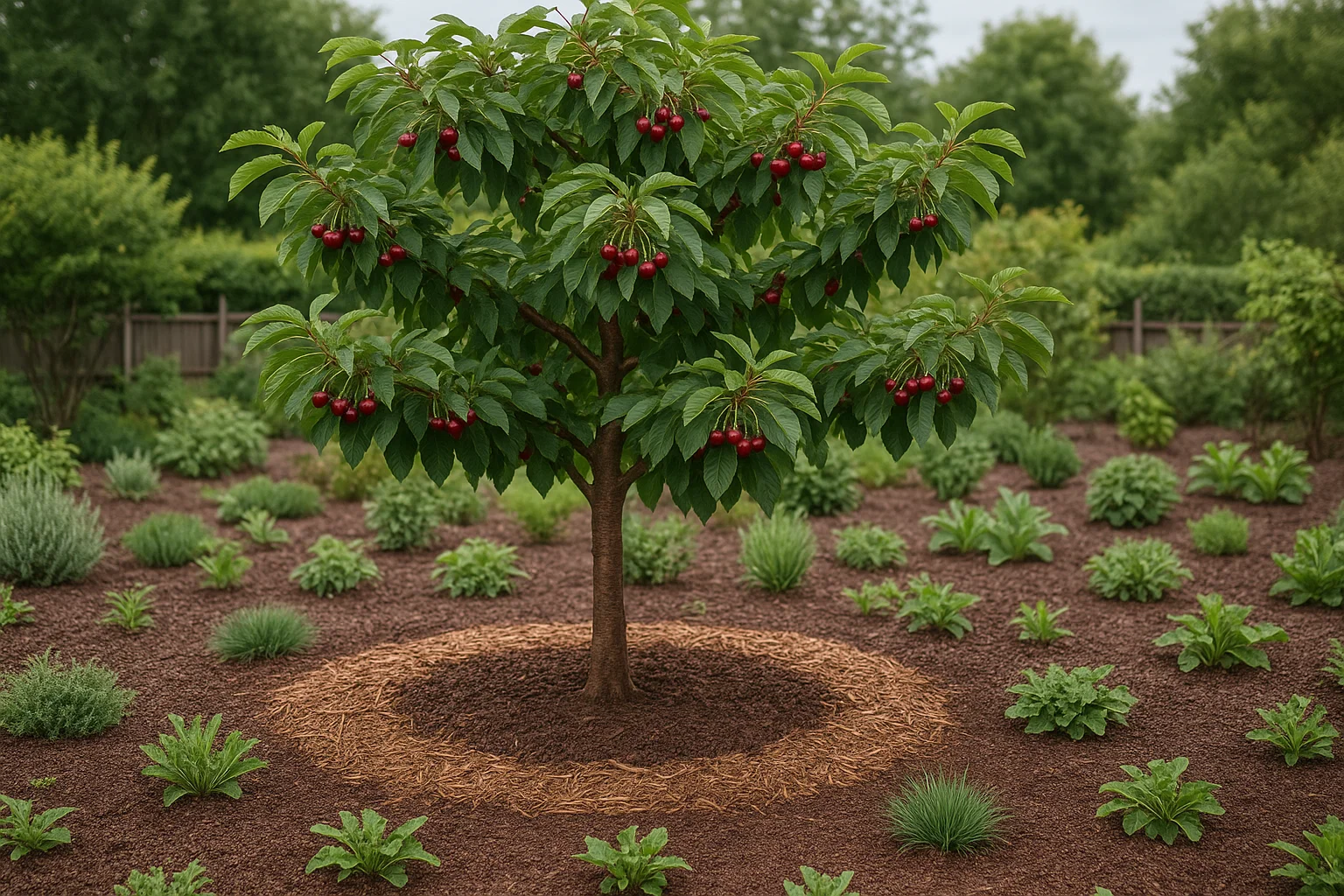
🌱 Ongoing Tree Care 🌱
Healthy trees are more likely to survive frost damage, so regular care is crucial. Keep up with watering, pruning, and fertilizing throughout the growing season. 🌿 By maintaining good tree health, your cherry tree will be better equipped to handle frost and other stressors.
📱 Frost Monitoring and Alerts 📱
Stay ahead of frost by monitoring local weather conditions. Many weather apps and websites offer frost alerts that can give you a heads-up before temperatures drop too low. Knowing when a frost is coming allows you to take protective actions in time. You can also set up a thermometer near your tree to track local temperatures. 🌡️
🌍 Climate-Smart Gardening Practices 🌍
As climate change causes more unpredictable weather, it’s important to adapt your gardening practices. Planting frost-resistant cherry tree varieties is a good start, but also consider adjusting your planting schedule or choosing locations that are less likely to be affected by late-season frosts. 🌸 Planting in well-drained soil and using mulch to insulate roots will also help protect your tree from future cold spells.
By focusing on long-term prevention and regular care, you can strengthen your cherry tree’s resilience and enjoy a bountiful harvest year after year—no matter what Mother Nature throws its way! One essential aspect of this care is learning how to protect your cherry tree from frost damage, which can significantly improve your tree’s chances of thriving through unexpected cold snaps. 🍒
🌟 Final Thoughts 🌟
Taking proactive and long-term steps to care for your cherry tree ensures it stays healthy, resilient, and productive, even in the face of challenges like frost. 🌿❄️ Regular monitoring, proper care, and timely protection measures can go a long way in safeguarding your tree against future threats.
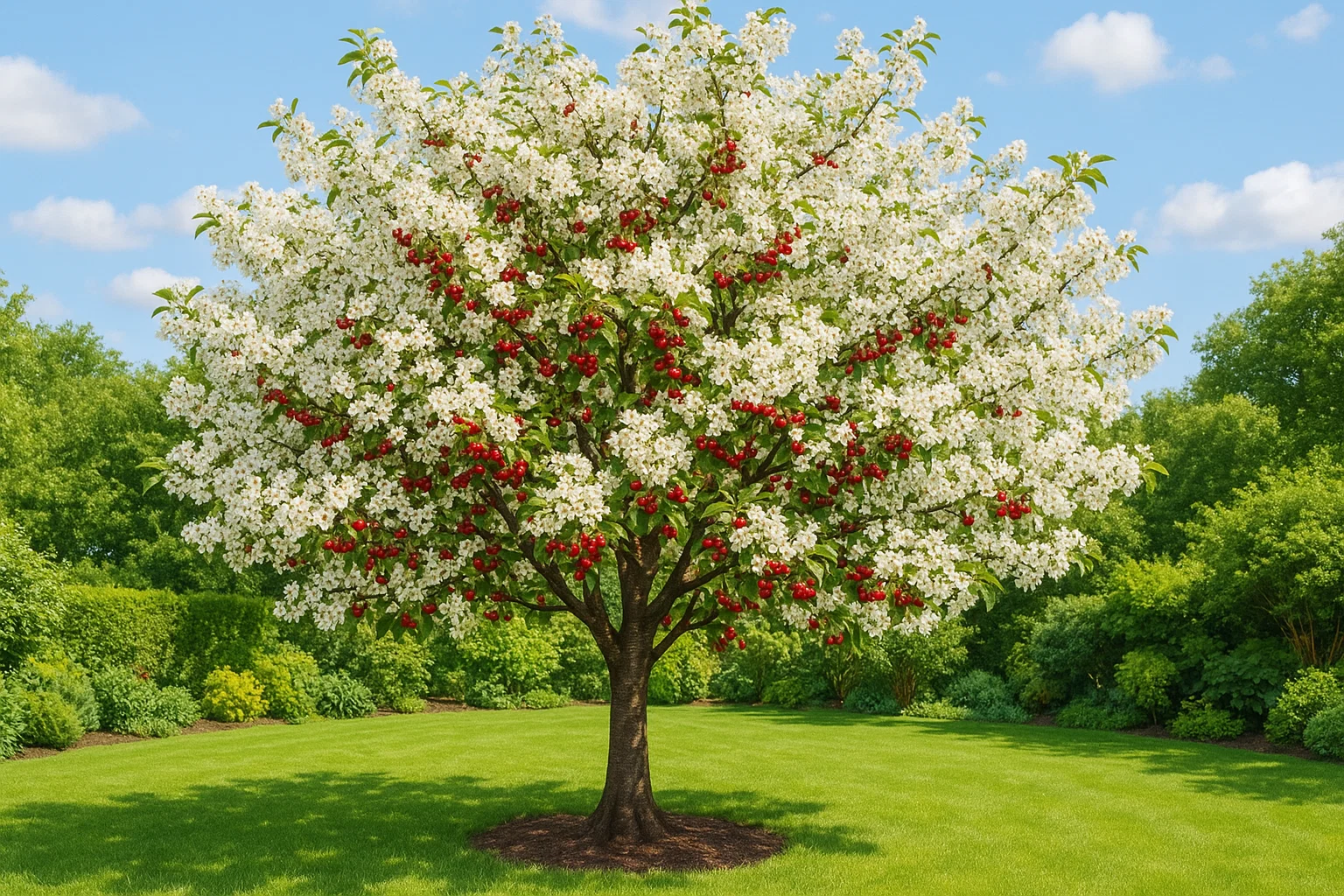
By focusing on good practices like pruning, watering, and choosing the right varieties, you can enjoy beautiful blossoms and delicious fruit year after year. 🍒🌳 With dedication and the right approach, your cherry tree will thrive no matter the season!
Frequently Asked Questions (FAQs)
What causes frost damage to cherry trees?
Frost damage occurs when cold temperatures cause ice to form on the buds, flowers, or branches, damaging the plant cells.
When is frost most harmful to cherry trees?
Frost is most damaging in late spring or early fall when cherry trees are in bloom or have tender new growth.
How can I protect my cherry tree from frost damage?
Use frost covers, mulch around the base, and ensure proper tree placement to minimize exposure to cold winds.
Can I use a tarp or blanket to protect my cherry tree from frost?
Yes, covering your cherry tree with a tarp or blanket at night can help insulate it from frost. Be sure to remove it during the day to avoid overheating.
Should I water my cherry tree before a frost?
Yes, watering the tree thoroughly before a frost helps protect the roots and keeps the soil from freezing, which can prevent further damage.
How do I know if my cherry tree has suffered frost damage?
Signs include brown, wilted, or deformed leaves, as well as blackened or dead flower buds and stems.
Can I prevent frost damage by pruning my cherry tree?
Pruning can help remove weak or damaged growth, but it won’t necessarily prevent frost damage. Proper winter care and protection are key.
Are some cherry tree varieties more frost-resistant than others?
Yes, some cherry tree varieties, like Montmorency, are more tolerant to cold temperatures, but all cherry trees benefit from frost protection measures.
